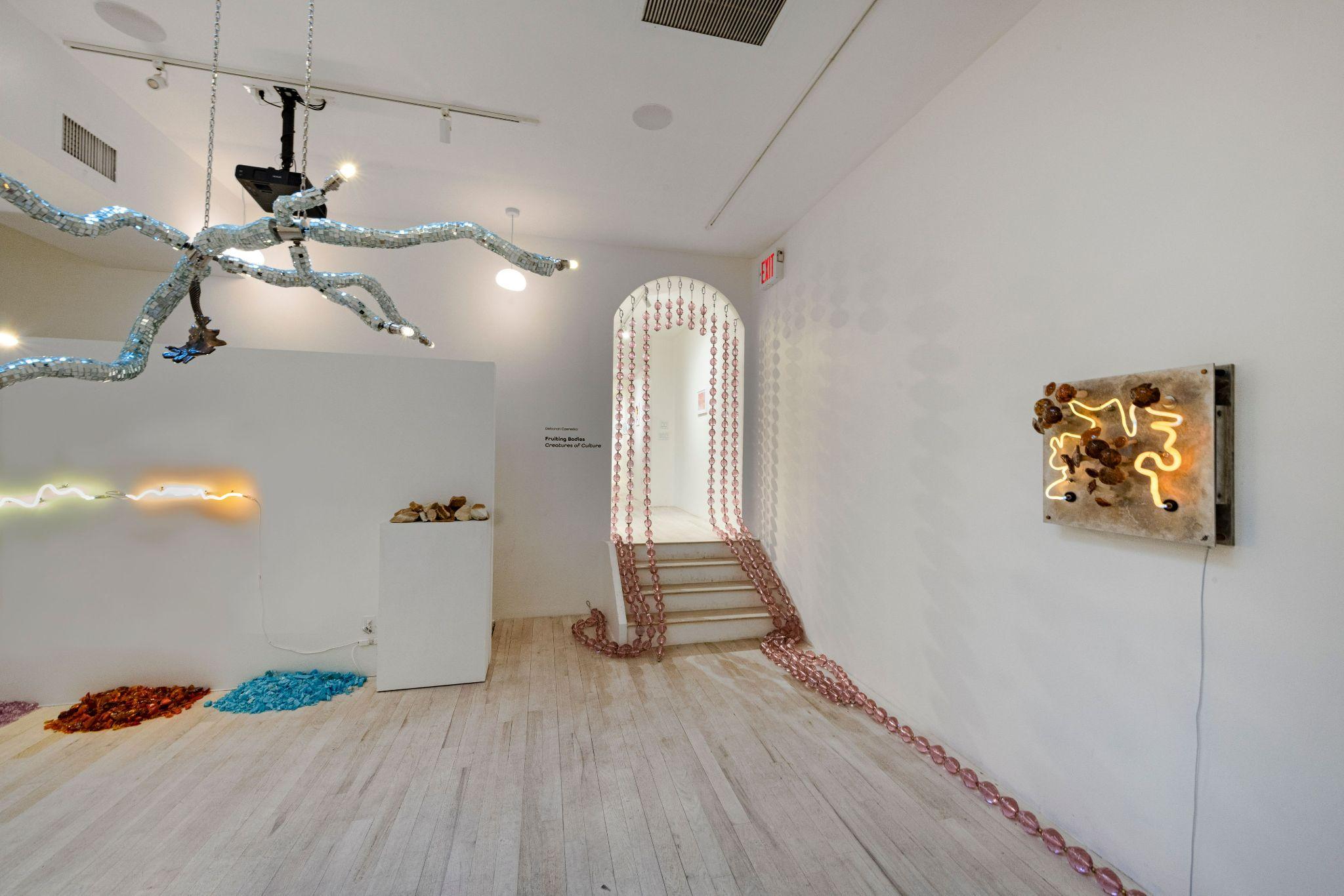Cutting-Edge Glass Mushrooms


In order to enter Fruiting Bodies–Creatures of Culture, Deborah Czeresko’s solo show at Hannah Traore Gallery, one must walk through a pink beaded curtain reminiscent of 1970’s psychedelia. The curtain acts as a sort of portal into the exhibition space, transporting you into Czeresko’s world. Situated on the floor extending to the walls of the room is a garden of small mushrooms in soil, connected by zigs and zags of neon light. All of the works in the room are made from glass. The base layer is composed of 1200 pounds of glass ‘soil’, populated by hand-fabricated mushrooms and decaying leaves. The mushrooms are beautifully constructed, and convey a sense of vitality in their form. No two figures are similar in their shape or color, creating unique, little entities throughout the exhibition space.

Mushrooms are of great interest to Czeresko due to their inherent queerness. Mushrooms fall in the gray area between plant and animal, leading them to be nonbinary in nature. This intersection of the natural world and queerness provides the framework for Fruiting Bodies. Mushrooms, as depicted by Czeresko through the neon lights connecting the glass fungi, form networks of fruiting bodies. As opposed to mycelium which, is the vegetative body of the mushroom, the fruiting body produces spores and serves as its reproductive structure. These networks allow for communities to form within the mushrooms, which Czeresko uses as a metaphor to the queer communities present throughout our world.

In the center of the room hangs a massive chandelier, made of undulating, branch-like tubes covered in mirrored tiles. From the work hangs falling glass leaves, in the same style as the glass mushrooms placed throughout the room. This central piece has been dubbed the Queer-delier, and has the same shimmering effect as a disco ball. The piece references queer nightclubs, a space that has provided the LGBTQ+ community a place to exist unapologetically for decades. Evoking these spaces of self-expression within art contexts is somewhat of a trend, Swedish art collective MYCKET recreated a queer nightclub setting at Oslo’s most recent architecture triennial themed around community. Czeresko’s queer ecological environment takes on an air of fun thanks to the chandelier, creating a glamorous and inclusive space.
It was refreshing to see such a dynamic presentation of glass works in a gallery space. Hannah Traore Gallery, founded and run by Hannah Traore, has been blazing its own path since its 2021 opening. The gallery’s founding principle is to give a voice to artists who have been historically underrepresented in the art world, through a highly intersectional lens. A queer glass artist, New York-based Czeresko ticks two categories within this cutting-edge vision. Glass work, as Czeresko has based her career in, is often relegated to the categorization of a craft, rather than a work of fine art. This exhibition clearly shows on the one hand how this medium can convey profound concepts, while also being formally interesting and aesthetically beautiful, and on the other a resonant vision of queerness.
Deborah Czeresko Fruiting Bodies–Creatures of Culture is on view at Hannah Traore Gallery from March 20 – May 27, 2023.
You Might Also Like
Artistry Abounds in “New Glass from Sweden” at Culture Object
What's Your Reaction?
Writer, Cultbytes Lily Williams is a freelance writer based in Brooklyn, New York. She is a graduate from Hamilton College, where she studied Art History. Apart from writing, Lily is a cultural strategist working with arts institutions throughout the country.

